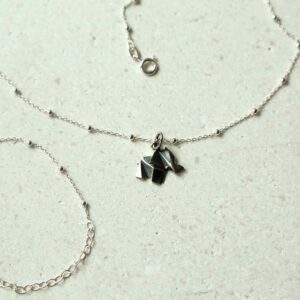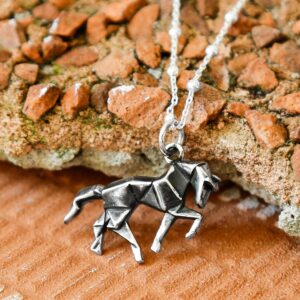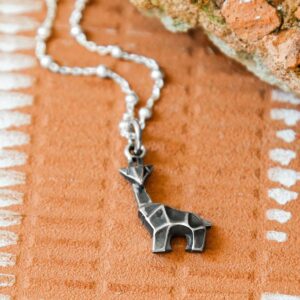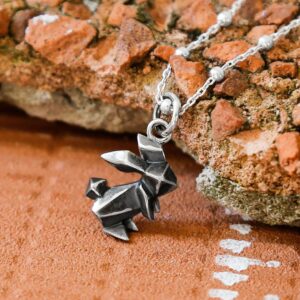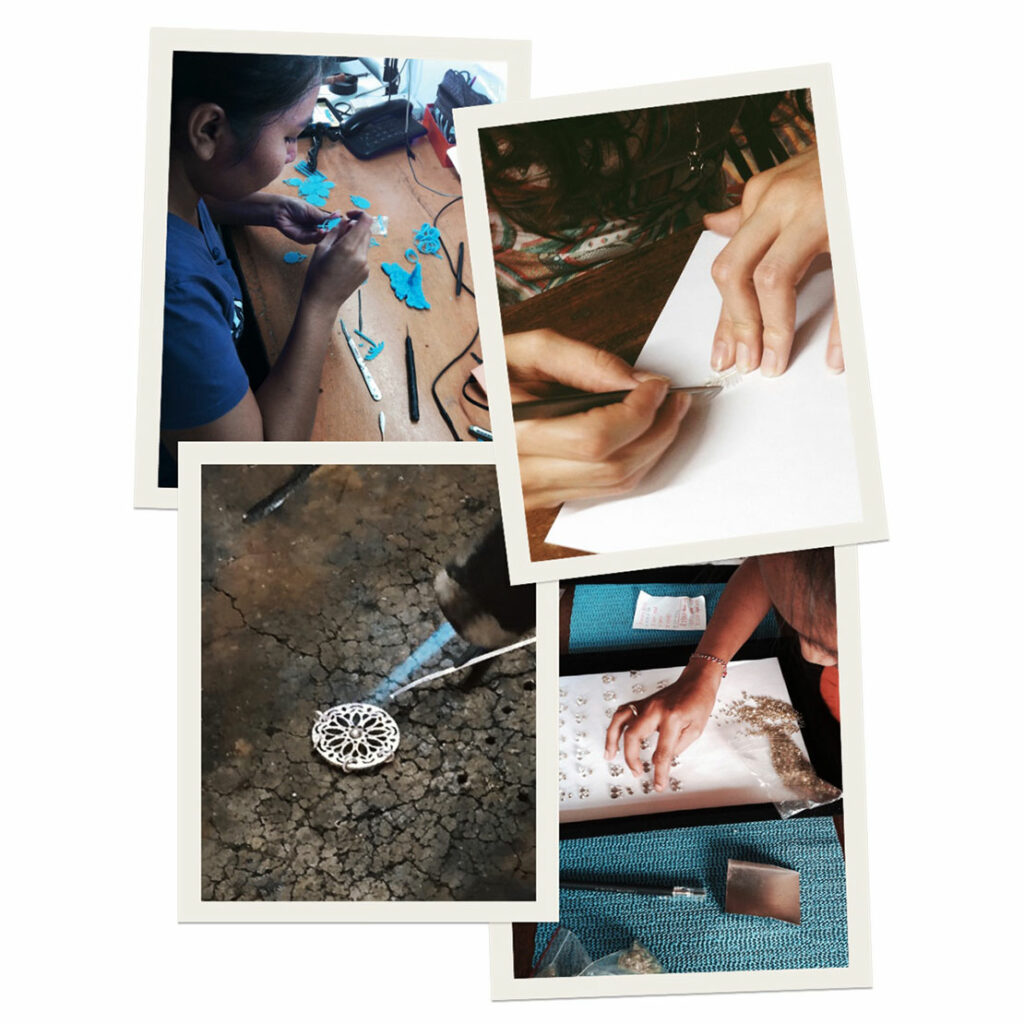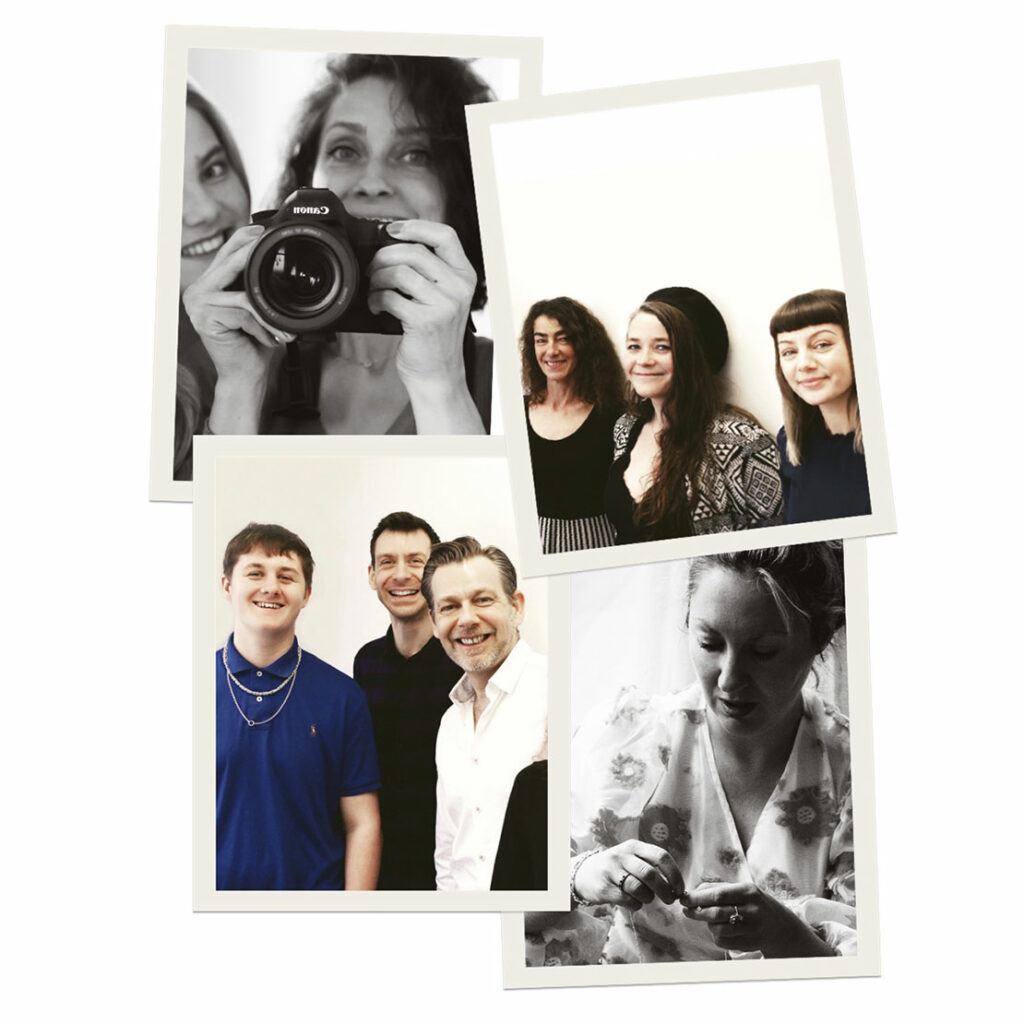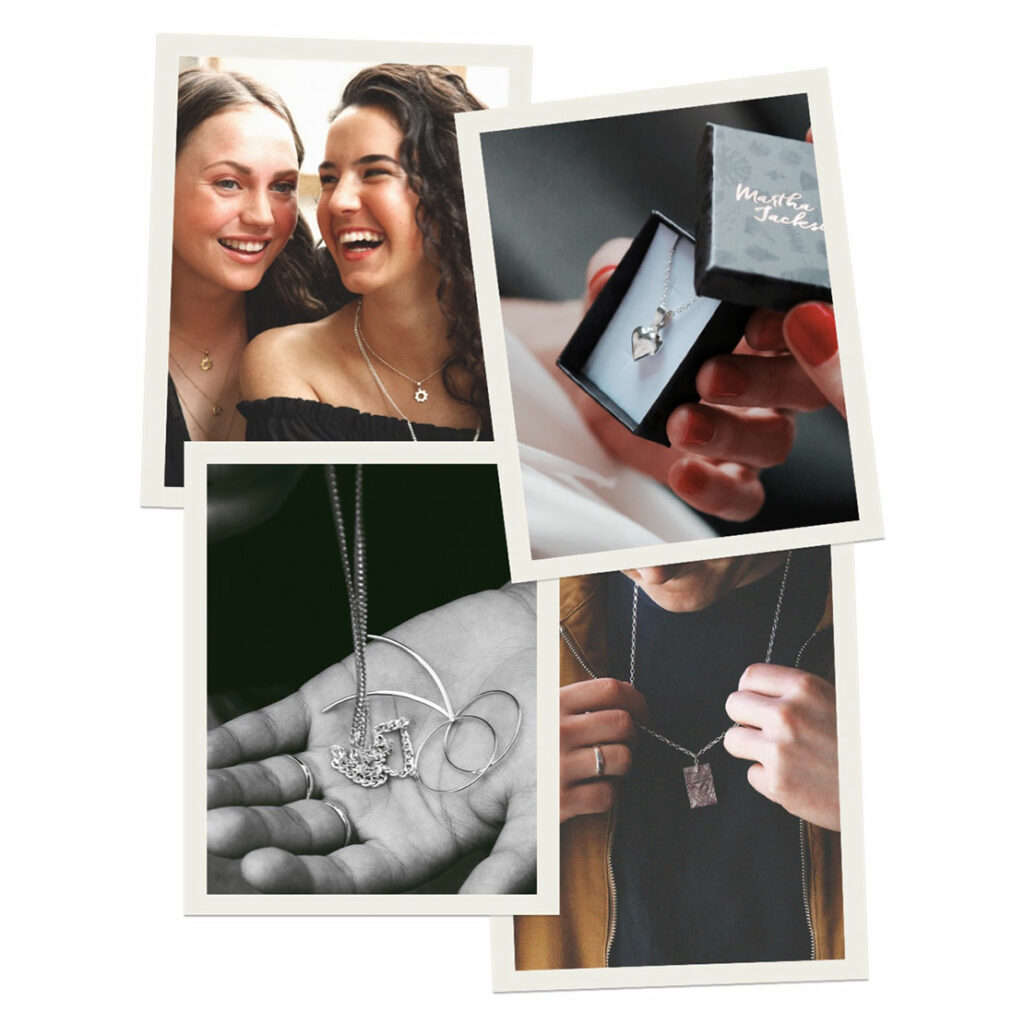Dave Brill’s brilliant origami horse
“Did you really make that from a piece of paper?”
Is something commonly asked of artist Dave Brill. Especially related to his famous origami horse. Nestled away in the Cheshire countryside, Dave was kind enough tell us the story about what led to him creating the origami masterpiece.
Martha Jackson’s very own origami horse necklace was
inspired by this ground-breaking work of art, so therefore we were keen to get the scoop.
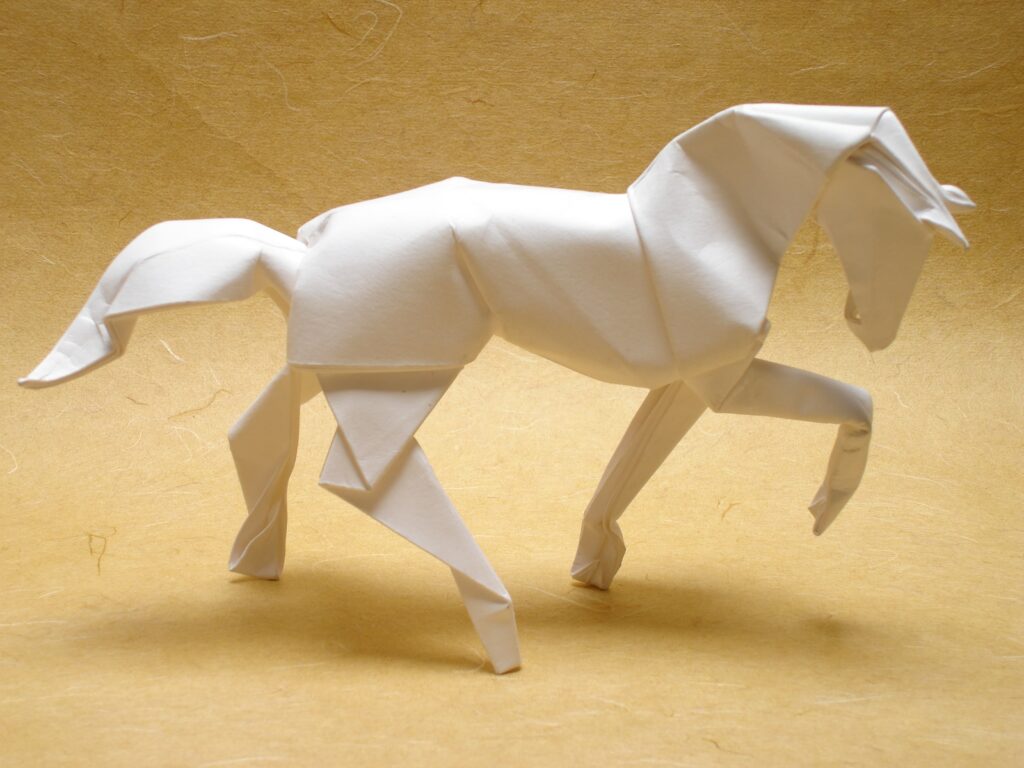
A childhood hand-me-down led to a lifelong passion.
Who would’ve thought that when Dave’s older siblings handed down a dog-eared 1946 Rupert Bear Annual, it would lead to Dave becoming one of the worlds leading origami folders and creators? Certainly not Dave when his childlike hands mimicked a very simple origami pattern.
Dave was fascinated from the moment he created his first origami flapping bird. He quickly discovered mischievous creations such as Japanese water balloons (aka water bombs!). Like many joyful pursuits of childhood origami was forgotten in the teenage years.
A passion re-discovered on the road.
As an adult working for a major UK bank, Dave travelled the UK. He was often in remote places. Alone and bored in the evenings. His interest in an old Robert Harbin origami book was renewed whilst in a remote hotel.
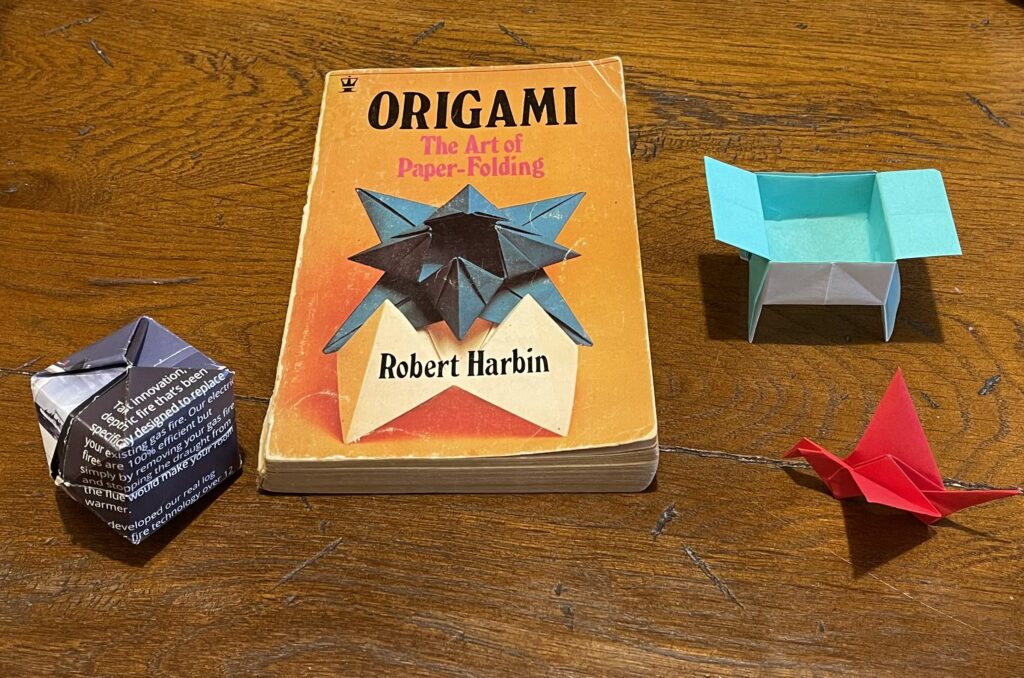
Brill started simple and began to make more complex creations. His ability soon out-grew the books so he wrote to Japanese publishers to see what else he could find.
A gift that is passed down.
In Japan origami is passed down between mother and child. Due to the necessary simplicity, many traditional origami shapes or patterns didn’t evolve. Through new contacts, Dave discovered a network of origami fans and creators. The fans were sharing their origami and letters to each other.
Through letter-swapping, Dave joined (and eventually lead) the British Origami Society. Origami conventions became a permanent fixture in his diary. Conventions introduced Dave to origami artists who were making their own designs. This was a watershed moment.
A square of paper can be mind-blowing.
A young man in his 20’s, Dave was amazed at the complex animals and insects that could be achieved with a piece of paper. Folding the corners to the centre (in origami language this is the blintz – originating from the word blini) was a huge revelation. The potential was suddenly doubled by
creating eight corners rather than the standard four.
Experimenting with the blintz lead to elephants, flapping birds, and ultimately the horse.
Meeting a ‘couple of guys at a convention’ opened Dave’s eyes.
The artist met more origami artists at an event in the 1970’s. One event lead Dave to meet a man who pre-mapped and pre-determined his folds before he began to make a piece.
After spending years developing through chance, Dave realised it would be more satisfying to have a pre-determined aim. This idea altered Dave’s mindset. He set his sights on bold outcomes. He began to apply logic to creativity.
About the horse.
The evolution of the horse came about in the 1970’s. Dave was experimenting with the blintz. His objects were getting more complex than he previously thought was possible. He was learning with every fold.
Traditional forms of origami were being broken down. New geometries were revealed which resulted in new outcomes. Previously the same folds were being used by many people. This meant that similar shapes were occurring. Even if the end result was a different animal. The underlying shapes and structures were the always the same. Dave started to transcend this.
A TV program featuring kangaroos in the wild and bounding through open space intrigued Brill. Dave’s curiosity and ambition came to a crunch-point. He wanted to capture this fleeting and bouncing movement.
The process started with a different shape, but the resulting kangaroo was too thick. The folds of paper weren’t efficient. The aim of an origami artist is to use folds and layers economically. Experiments with equilateral triangles (rather than the standard squares) were carried out. Yet this wasn’t an origami purist’s approach. Yet it delivered an elegant result.
Experiments opened up avenues to explore. The first iteration of the horse had a bowed neck. It’s been optimised over the years. The first time Dave created an acceptable horse was particularly thrilling – this is the horse he will remember.
The is known as the ‘Iconic Origami Horse’ amongst other origami enthusiasts and artists. It’s Dave’s trademark.
It isn’t as easy as you think it is.
Part of the fun with origami is overcoming the hurdles. As with everything in life, it’s more satisfying to set your sights on an object and struggle before you succeed. Origami is an extraordinary world where the raw material in its simplest form can only be manipulated through folding.
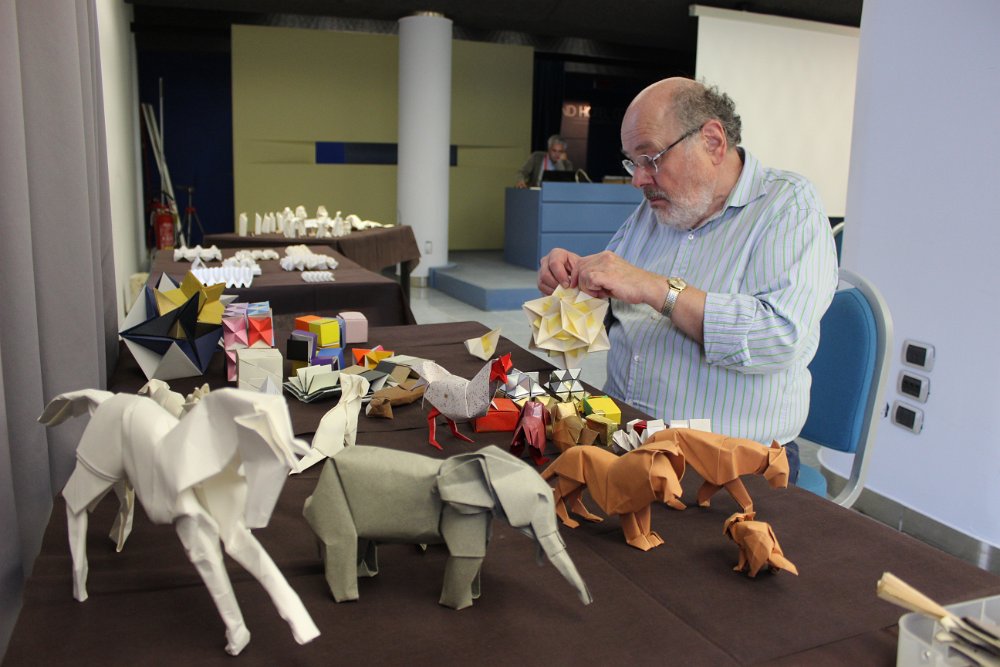
Minds like Dave’s explore every way to achieve something complex; an insect with antennae or an octopus without cutting. The Japanese word origami means folding paper. And many origami artists find the joy in the journey of folding, rather than the finished piece.
Not just folding paper though, it’s a way of life.
Dave met his wife through origami. He has travelled the world. He has even authored a book. Deep friendships have been made and forged across vast oceans.
“It was a thrill, of course it was. I’d write a fan letter to a famous origami artist and include the envelope a piece of origami inspired by their work. Back then, the polite thing to do was to reply with a physical piece of art, origami. And this was thrilling.”
An artform easily accessible from daily disposables.
The instant attraction for Dave is that he can put his hand out, and there is a piece of paper from which anything can be created. A direct mail through or unwanted bill can be whatever a mind determines it to be.
Are you inspired by Dave Brill’s story? Here’s his website where you can learn more: www.brilliantorigami.com.
We have our very own origami horse, inspired by Dave’s Iconic horse. Our origami horse is made from recycled sterling silver and can be found here.
And here are Dave’s 5 tips for origami:
- Start your journey studying books by respected authors such as Michael LaFosse, Tomoko Fuse, or Kunihiko Kasahara. Alternatively, fold from YouTube tutorials by Sara Adams or Jo Nakajima.
- Experiment with all types of everyday paper you can find, as well as commercially available origami papers.
- Enjoy the folding process as much as the finished product
- Explore the many branches of origami: traditional, animals and living creatures, geometric form and unit or modular origami, tessellations,
- Join a group or a society, such as the British Origami Society or Origami USA


